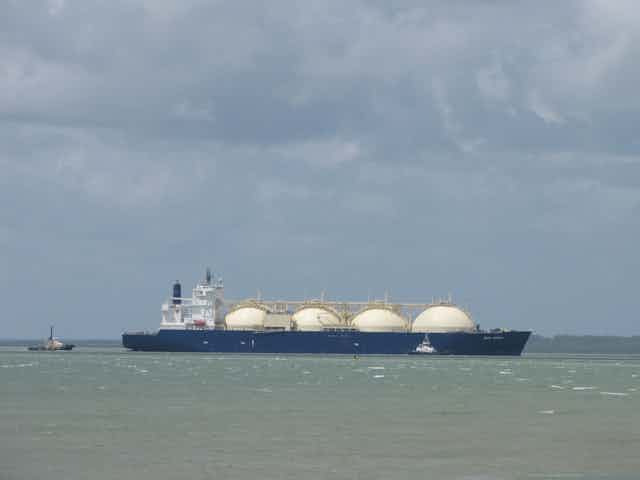Natural gas has been extracted from Australia’s North West Shelf and exported as liquefied natural gas (LNG) for almost 30 years. It is Australia’s fastest growing resource export. But the recent introduction of the F word - floating that is - has caused quite a stir.
Floating liquefied natural gas, or FLNG, is not a new idea. It has been seriously considered by industry since the 90s – but only recently have technological advances and economic drivers provided the opportunity for FLNG to become a commercial reality.
How is it different to LNG?
Liquefied natural gas, or LNG, is natural gas (methane) chilled to -161C to become a liquid, which then occupies about 1/600 the space of methane in its gaseous form, making it practical to transport.
The “conventional” approach to producing LNG is to pipe the gas from the field – which may be hundreds of kilometres offshore - to an onshore plant to be processed and liquefied. The gas is then stored on site before being offloaded to a LNG tanker to be taken to market.
Floating liquefied natural gas, or FLNG, describes a method for developing offshore natural gas in which gas will be extracted from the seabed, then processed, liquefied and stored on a floating facility that will be permanently moored over the field. The LNG will then be offloaded to a tanker and taken directly to market.
The product from FLNG will be the same product that has been produced and exported from Australia for nearly 30 years. The difference lies in the fact that the gas will not come onshore until it is already processed and liquefied.
The future tense is necessary to describe FLNG since there are currently no operating FLNG facilities. The world’s first FLNG facility, Prelude, is currently under construction and due to produce first gas in three to four years.
Why FLNG?
Floating liquefied natural gas provides the opportunity to develop so-called “stranded gas” from marginal or remote fields, that would otherwise not be financially viable to develop in the foreseeable future.
Using the example of the Prelude Development, Shell predicts that the Prelude and Concerto fields will produce 3.5 million tonnes per annum of LNG as well as liquid petroleum gas (LPG) and condensate for at least the next 25 years.
Shell predict this will create 1,000 permanent jobs over the lifetime of the project and add A$45 billion to Australian GDP, A$12 billion in tax revenue, A$12 billion spend on Australian goods and services, and improve Australia’s balance of trade by A$18 billion from LNG, LPG and condensate exports.

FLNG may also have less impact on the environment than conventional LNG processing. Without the need for pipelines, coastal works and an onshore processing plant, disturbance to the seabed and the land is reduced.
How far away is it?
The Prelude and Concerto fields in the Browse Basin on Australia’s North West Shelf are likely to host the world’s first FLNG facility. FLNG technology is also being considered for the Scarborough and Browse developments on the North West Shelf. Internationally, operators Total and Statoil are actively pursuing FLNG technology to add to their energy portfolios and Petronas, the national oil company of Malaysia, passed a final investment decision for a FLNG project in June last year.
Shell’s philosophy of “design one, build many” indicates their vision for a strong future and the industry’s interest reflects that vision. Perth hosted the Australian Gas Technology Conference recently and floating LNG was front and centre of discussion.
It was was a hot topic at LNG17 (hosted in Houston earlier this year) and is likely to dominate the stage when Perth hosts LNG18 in 2016.
Perth has the opportunity to become a centre of excellence for floating liquefied natural gas technology, as it has achieved in other areas of offshore engineering, particularly in seabed engineering.

